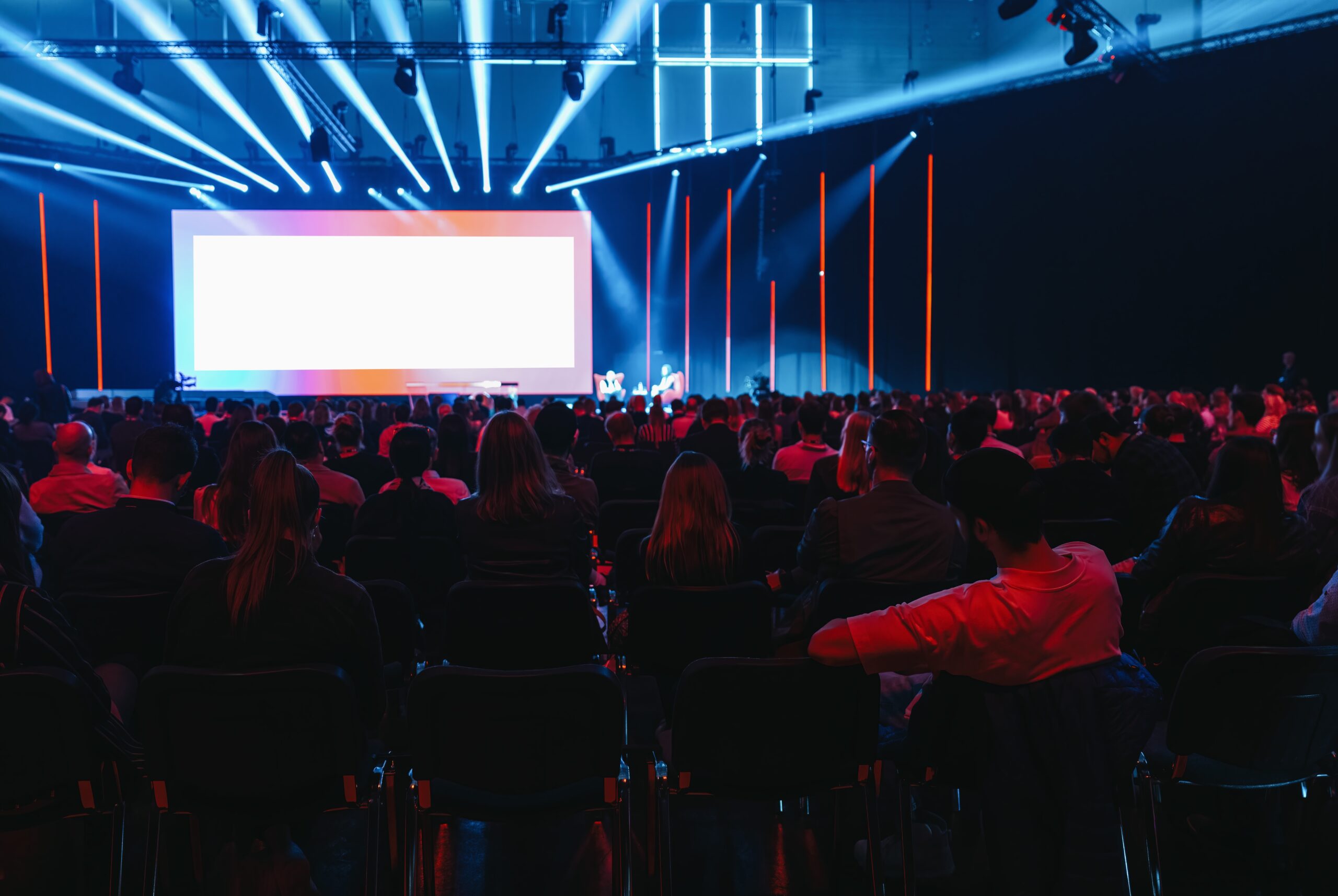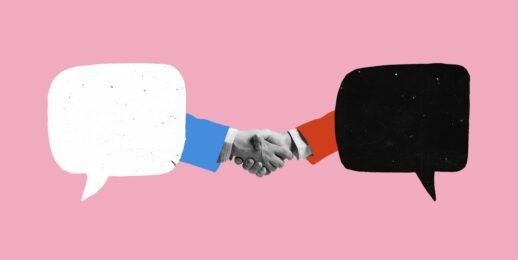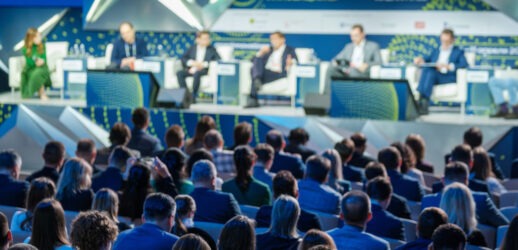Mastering lighting for your events
And we’re back! Continuing our series, we’ve already looked at the A and V of AV. In this article, we take a look at the “L” of AV—Lighting!
Lighting is more than just a necessity for visibility on stage or on camera, it’s a powerful tool that can transform the overall ambiance of a meeting or event, highlight key moments, and enhance the overall experience for attendees. In the world of meetings and events, understanding the nuances of lighting design and its impact on the audience is crucial. So let’s explore the best practices for effective lighting, some of the types of lighting instruments, and strategies for managing lighting costs without compromising quality.
The Importance of Lighting in Event Planning
With the obvious value of good audio and the power of high-quality visuals, unfortunately, lighting is often the first part of an audiovisual quote to get the red pen. At the same time, it’s one of the most effective ways to set the mood and overall tone for your event. It’s also often the first thing people see when they come into the room. Sure, there might be some walk-in music playing, but the “buzz” of a freshly-opened ballroom is most often generated by the look of the room.
Read More: Elevate the ‘Video’ in Your Event Video Production Strategy
Lighting plays a key role in setting that look and feel. It can create a sense of excitement, focus attention, and evoke emotions. Good lighting enhances the aesthetic appeal of a venue (or sometimes helps de-emphasize the less attractive parts), making the event more visually compelling. Conversely, poor lighting can lead to a lackluster atmosphere, diminishing the event’s potential impact.
Add it Up
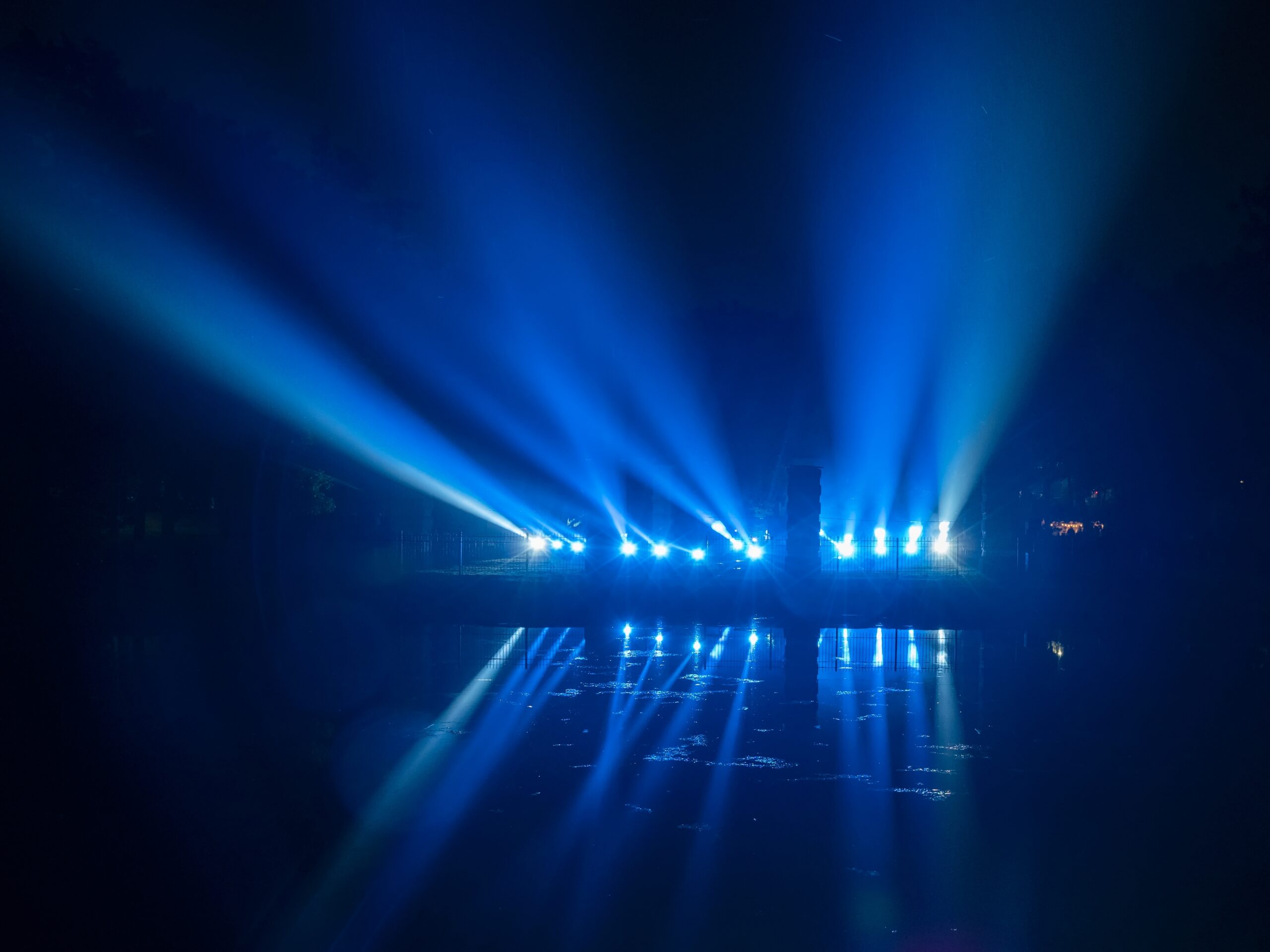
Lighting comes in a few different “flavors”. There are things you need to light, which is generally considered “functional lighting”. That would be things like a stage wash or spotlights on the lectern. Depending on your venue, you might need to supplement your registration area with lighting to make it easier to find, or for registration workers to see. In our previous article, I mentioned that any time cameras are involved, you’re going to want lighting, and so in that respect, you might need even more of this “functional lighting” so that we can see everything you plan to have on camera, including the audience.
Beyond the functional, there is a wide swath of lighting instruments dedicated to setting the mood, adding texture, adding color, and generally adding “oomph” to your design. I’d put uplights, moving-head fixtures, color washes, and other, more aesthetic-leaning lighting in this category.
Much like our discussions of audio and video inputs and outputs, you need to think through what needs to be lit, and then what additional aesthetic lighting you want to add and how much. Lighting, however, adds a third thing you need to consider—the different “looks”. What is the walk-in look? What does it look like when presenters are on stage? During a video? Are there award winners? Prizes? Is there a band?
All of these things need to be considered when deciding what lighting package your event will require, and you should feel free to talk through your objectives for each of these looks with your audiovisual team during the quoting process. Don’t forget to mention things like corporate colors or theme colors, and especially what colors the Lighting Designer might want to avoid. I’ve had clients request certain colors be avoided because they evoke the logos of competitors, and others that just didn’t like the look of their corporate green behind their presenters, and so preferred a deep purple instead. Just let us know, and we’re happy to accommodate!
Right Gear, Right Time
Once you’ve determined what you need to light, what you want to light, and what different looks you think you’ll need, working with your AV or production company to get the right lighting instruments is crucial. A lot of planners don’t know the difference between these instruments, so let’s do a quick 101 on the basics.
Most lighting instruments can fall into a couple of different categories- Profiles and Washes. Profiles tend to be “spotlight” fixtures, with tight, crisp beams that can be adjusted or shuttered off. The classic “Source Four” or “Leko” fixture is a profile fixture, but these can also be moving head instruments such as a Martin Quantum Profile or Robe Esprite. Though mostly used for concert situations, followspots would also fall into this category.
Profiles are more likely to have options for “gobos”—the textured cutouts that create those cool patterns on the floors and walls (or company logos)—and other effects such as shutters or irises that impact the shape of the beam and can look like a laser-light show. Don’t underestimate the power of texture and beam size in addition to color!
“Wash instruments” tend to have fewer bells and whistles, and generally just throw a “wash” of color onto a room or stage. In the Bad Old Days, we would need rows of single-color “par can” instruments, alternating red, blue and green, that you could mix colors by adjusting the levels of each set of colored lights. Now, with LED instruments, you can use about 1/3 the number of wash lights, setting the color of each light individually.
Uplights would generally fall into the wash category, being used to throw color around a room and contributing to the overall mood. While perfect for ambient lighting, they’re also a great way of creating a separation between your presenter and the stage backdrop. I can’t tell you the number of times I’ve seen a presenter visually blend into their background, both in-person and on camera. Just a handful of inexpensive uplights would have prevented it. If you really want to go next level, add some lights on an upstage truss behind your presenters for both texture as well as “hair lights” that point to the stage. These help make presenters pop from the background by adding light to their heads and shoulders.
Chances are that your event will require a mix of these two types of instruments to effectively cover both the functional and aesthetic lighting.
The Early Bird Gets the…Um, Worm I Guess?
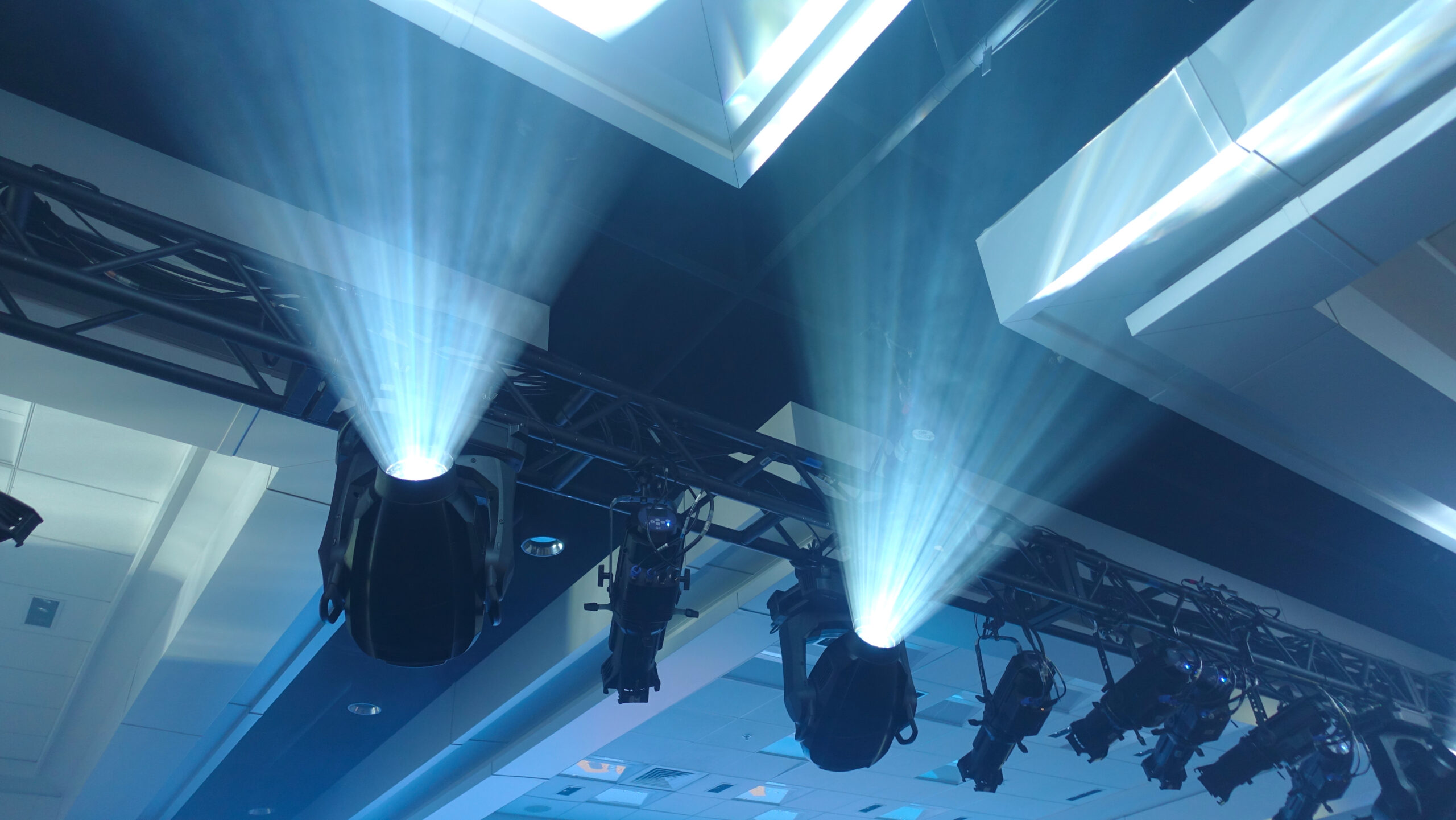
Effective lighting design requires careful planning and coordination with other elements of the event, such as audio and video. Start thinking about the lighting design earlier in the planning process, and it will allow for a more cohesive design that integrates well with other aspects of the event. Even before you’ve reached out to your AV or production company, you can start thinking about lighting while conducting site visits to the venue beforehand.
Take note of the venue layout, natural lighting conditions and existing lighting infrastructure. This will help identify potential challenges and opportunities. Are the “house lights” controllable? Or are they just a touch panel on the wall with three presets? Lighting designers love having full control of all the lights in the room, including the house lights, and if I were helping choose the venue this would actually be pretty high on my list of pros and cons. I can’t tell you the number of times I’ve had beautiful, well-thought-out lighting designs thwarted by awful, barely-controllable house lights. I ran into a venue recently where if you took the lights all the way down to a “blackout” the only option was “fully on” afterward. No subtlety, no “smooth fade” to show levels- just on. Yuck.
Reply Hazy: Try Again
While we’re on the topic of things that make lighting designers happy (and also more effective), let’s talk about haze. “Haze” is the generic term for the water-based, lightweight “fog” that can really make light beams pop in a space. There’s a reason fog machines have been a rock and roll staple for decades—it just makes lights look cooler and is basically required if you intend to have anything resembling a laser effect.
Haze is weirdly controversial. Despite the fact that it’s water-based, it does have a bit of a “hotplate that’s been left on too long” smell, and I think many people have a psychosomatic reaction that makes them cough. I’ve even seen a presenter hop off the stage in the middle of their presentation to redirect the fan in front of the hazer because they felt it was blowing “smoke” at them while they presented and was “making them cough.” To be clear, haze is not “smoke” or fog. It is completely harmless and only adds to the mood of your event.
While I would love to have haze on the majority of my medium-to-large productions (and even some of the small ones!), some factors can make it cost-prohibitive. In addition to the cost of the hazer equipment (which is relatively minimal), a lot of venue fire and smoke detectors are based on determining particles in the air that shouldn’t be. Haze can potentially set these detectors off (again, despite being perfectly harmless), so if you’re planning on using haze at your event it’s important to coordinate with the venue to make sure that these detectors are turned off. This usually requires that a security agent be in the room acting as a “human fire detector” in case of emergency. Some venues don’t charge for this service, others will charge you an arm and a leg. In the worst case I’ve heard of, they had to turn off the fire detection for the entire hotel and would have required a “fire watch” agent on every floor of the hotel—all 14 floors—for the duration of the event.
The client ultimately decided it wasn’t worth the expense, making “What’s your policy on haze?” another good question for your site visit.
The Red Pen: Cost-Saving Strategies
Lighting can be a significant portion of the AV budget, but there are ways to manage costs effectively. Leveraging the venue’s existing lighting equipment where possible can reduce the need for additional rentals or purchases. For a minimalist event, I’d look to have enough Source Four or similar instruments to cover the stage, along with 2-4 wash instruments to add a little color. Moving head instruments can be expensive, but uplights and these “fixed” ellipsoidal instruments can be relatively cheap. I almost always have some kind of uplights on the backdrop of the stage, even if it’s just pipe and drape.
Read More: Contingency Plans Save the Day for Events, Again and Again
For more “party” events (as opposed to corporate keynotes and sales events), you might want to supplement with things like cafe string lights, which can be purchased inexpensively and in bulk online. While not generally controllable or dimmable, they could add a nice atmosphere to the right event, and more and more are offering basic color changing via remote control. Afterward, they can be donated to staff, attendees or guests. I may or may not have outfitted my entire backyard fenceline with leftover string lights from an event…
And while I’ve often said that audio and video take budgetary primacy in the AV quote, I don’t in any way discount the importance and power of having a few inexpensive lighting instruments around the room to add a taste of color. One of the biggest, well-known in-house AV vendors regularly includes a couple of uplights for each breakout room behind the projection screen, just to add a little color and separation. And if it’s not too expensive to use, haze can make the impact of a handful of instruments even more powerful than adding more and more instruments without haze.
Illuminating Closing Thoughts and Beyond
Lighting is an essential element of event design that can significantly influence the overall mood and feeling of a meeting or event. By understanding the different types of lighting, choosing the right instruments, and applying best practices in lighting design, planners can create captivating and effective environments.
I hope you’ve enjoyed this series of audiovisual posts and would love to know what you’d like me to cover next. What are your most vexing audiovisual and event technology questions these days? What causes you the most furrowed brows? Let me know and let’s try and tackle it together! Feel free to reach out and let me know at [email protected].
This article appears in the September 2024 issue. You can subscribe to the magazine here.
